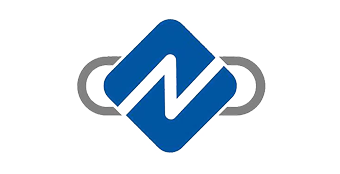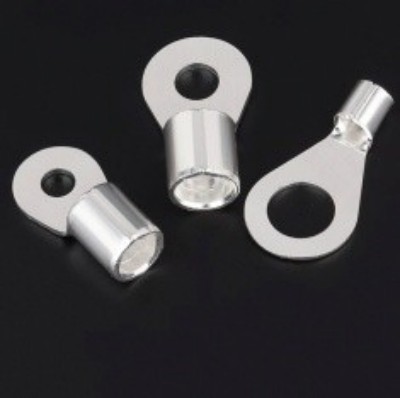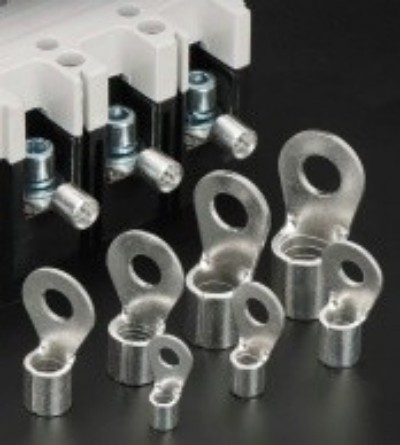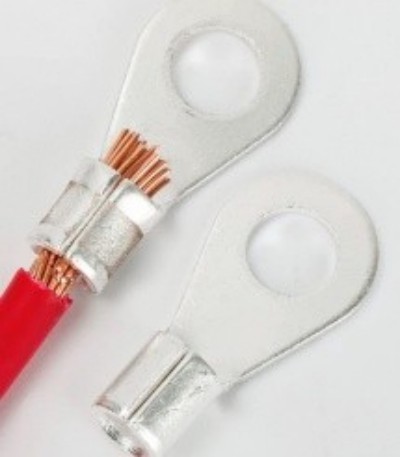1. Main Application Scenarios
1.Electrical Equipment Wiring
●Used for wire connections in distribution boxes, switchgear, control cabinets, etc.
●Widely applied in industrial automation equipment, motors, transformers, and other terminal processing scenarios.
2.Building Wiring Projects
●For both low-voltage and high-voltage wiring in residential buildings (e.g., lighting, socket circuits).
●Used in HVAC systems, fire protection systems, and cable connections requiring quick termination.
3.Transportation Sector
●Electrical wiring in vehicles, ships, and rail transit systems where high-reliability connections are critical.
4.Instruments, Meters, and Household Appliances
●Miniature connections in precision instruments.
●Power cable fixation for household appliances (e.g., refrigerators, washing machines).
2. Structure and Materials
1.Design Features
●Main Material: Copper or aluminum alloy with tin plating/anti-oxidation coatings for enhanced conductivity and corrosion resistance.
●Cold-Pressing Chamber: Internal walls feature multiple teeth or wave patterns to ensure tight contact with conductors through cold pressing.
●Insulation Sleeve (optional): Provides additional protection in humid or dusty environments.
2.Technical Specifications
●Available in various sizes (0.5–35 mm² conductor cross-section) to accommodate different cable diameters.
●Supports screw-type, plug-and-play, or direct embedding into terminal blocks.
3. Core Advantages
1.Efficient Installation
●Requires no heating or welding; complete with a crimping tool for fast operation.
●Reduces labor costs and project duration through batch processing.
2.High Reliability
●Cold pressing ensures permanent molecular bonding between conductors and terminals, minimizing resistance and stable contact.
●Avoids oxidation and loose connections associated with traditional welding.
3.Strong Compatibility
●Suitable for copper, aluminum, and copper-alloy conductors, reducing galvanic corrosion risks.
●Universally compatible with standard circular cables.
4.Economic and Environmental Benefits
●Lead-free and eco-compliant with no thermal radiation.
●Long service life and low maintenance costs for long-term applications.
4. Key Usage Notes
1.Proper Sizing
●Select terminals based on cable diameter to avoid overloading or loosening.
2.Crimping Process
●Use certified crimping tools and follow manufacturer-recommended pressure values.
3.Environmental Protection
●Insulated versions recommended for wet/hazardous environments; apply protective sealant if needed.
4.Regular Maintenance
●Inspect connections in high-temperature or vibration-prone scenarios for signs of loosening or oxidation.
5.Typical Specifications
|
Conductor Cross-Section (mm²) |
Cable Diameter Range (mm) |
Crimping Tool Model |
|
2.5 |
0.64–1.02 |
YJ-25 |
|
6 |
1.27–1.78 |
YJ-60 |
|
16 |
2.54–4.14 |
YJ-160 |
6.Alternative Connection Methods Comparison
|
Method |
Heat Shrink Sleeve + Welding |
Copper-Aluminum Transition Terminal |
|
|
Installation Speed |
Fast (no heating required) |
Slow (requires cooling) |
Moderate |
|
Safety |
High (no oxidation) |
Medium (risk of thermal oxidation) |
Medium (galvanic corrosion risk) |
|
Cost |
Moderate |
Low (cheaper materials) |
High |
Circular cold press terminals have become indispensable in modern electrical engineering due to their convenience and reliability. Proper selection and standardized operation ensure the safety and stability of electrical systems.
Post time: Apr-15-2025









